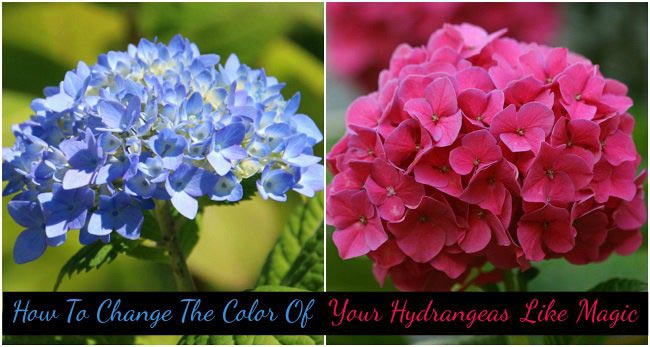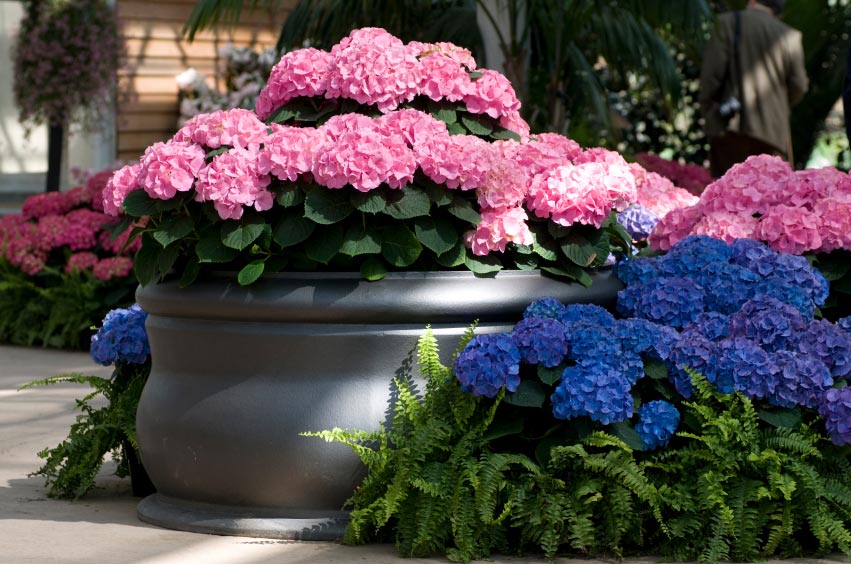

Why?
Because the blossoms on this beautiful plant have the ability to dramatically change color.
Maybe you’ve already noticed a perplexing color change in your own shrubs and couldn’t figure out
the reason.
Well, the secret behind their chameleon-like qualities is pretty simple – it’s down to the pH of the soil.
And, now you know that, the ability to change hydrangeas to suit your garden is well within your control. It’s no more difficult than a school science experiment, although it does require a little more dedication and patience.
If you grow your hydrangeas in containers or want to change from pink to blue, you’ll have it a little easier than those who want to switch from blue to pink. Naturally, container gardening means you have much more control over the pH and condition of your soil.
However, if you have white or cream hydrangeas, sorry – you’re stuck with them, their color can’t usually be altered. If you’re lucky, at the end of the season you might see a little pink tinge but that’s
about it.
Changing Hydrangeas from Pink to Blue

If you’d like your hydrangeas to take on that beautiful, shimmery violet-blue color they’re known for, then you’ll need to make your soil more acidic. This enables the aluminum in the soil to be released to your flowers, helping them take on a blue hue.
Firstly, check the pH of your soil to see how easy it will be to lower to the required level – you’ll be looking at a pH of around 5.2 to 5.5 for blue blooms.
If your soil’s pH is pretty high, you might be better off accepting your pretty pink blooms. Otherwise, you can acidify the soil by adding certain substances to it. While there are special products on the market that lower pH, a natural way is always best … even if it does require a little more time.
Using an organic mulch will help acidify the soil, and is also quite beneficial for microbial life and improving the quality of your soil. Try one made of pine bark, pine needles, sawdust, citrus peels, vegetable peels or coffee grounds. It’s a great way to get rid of kitchen waste too.
If you’re seeing no results the following year, you may also need to add some aluminum to the soil- you can buy products to help you do this.
Source